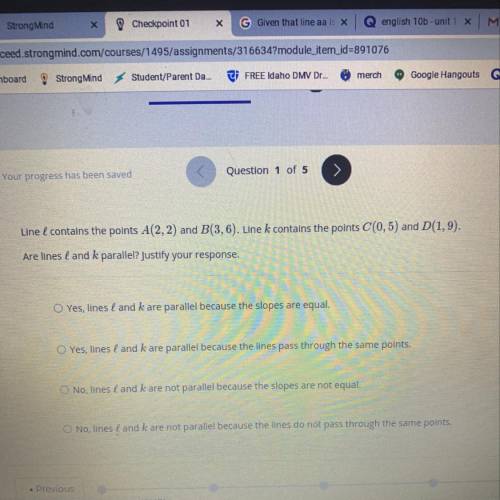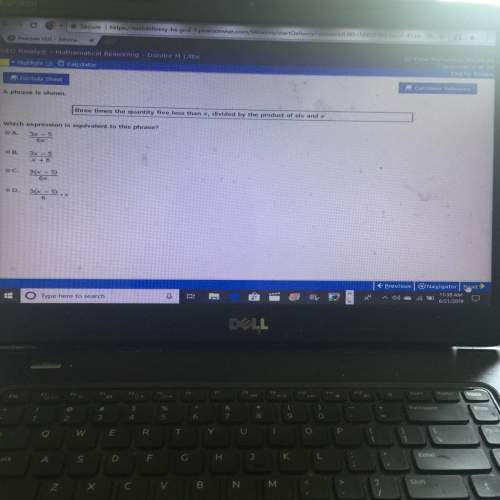
Mathematics, 22.08.2020 05:01 vctorsurfs327
Line l contains the points A(2, 2) and B(3,6). Line k contains the points C(0,5) and D(1,9). Are lines land k parallel? Justify your response.


Answers: 3
Another question on Mathematics

Mathematics, 21.06.2019 16:50
The table represents a linear function. what is the slope of the function? –6 –4 4 6
Answers: 3

Mathematics, 21.06.2019 19:30
When x = 3 and y = 5, by how much does the value of 3x2 – 2y exceed the value of 2x2 – 3y ?
Answers: 2

Mathematics, 21.06.2019 20:20
Consider the following estimates from the early 2010s of shares of income to each group. country poorest 40% next 30% richest 30% bolivia 10 25 65 chile 10 20 70 uruguay 20 30 50 1.) using the 4-point curved line drawing tool, plot the lorenz curve for bolivia. properly label your curve. 2.) using the 4-point curved line drawing tool, plot the lorenz curve for uruguay. properly label your curve.
Answers: 2

Mathematics, 21.06.2019 20:30
Does the function satisfy the hypotheses of the mean value theorem on the given interval? f(x) = 4x^2 + 3x + 4, [−1, 1] no, f is continuous on [−1, 1] but not differentiable on (−1, 1). no, f is not continuous on [−1, 1]. yes, f is continuous on [−1, 1] and differentiable on (−1, 1) since polynomials are continuous and differentiable on . there is not enough information to verify if this function satisfies the mean value theorem. yes, it does not matter if f is continuous or differentiable; every function satisfies the mean value theorem.
Answers: 1
You know the right answer?
Line l contains the points A(2, 2) and B(3,6). Line k contains the points C(0,5) and D(1,9).
Are li...
Questions



Mathematics, 28.10.2019 18:31

English, 28.10.2019 18:31


Mathematics, 28.10.2019 18:31

English, 28.10.2019 18:31



English, 28.10.2019 18:31

English, 28.10.2019 18:31



Chemistry, 28.10.2019 18:31




Health, 28.10.2019 18:31

Mathematics, 28.10.2019 18:31




